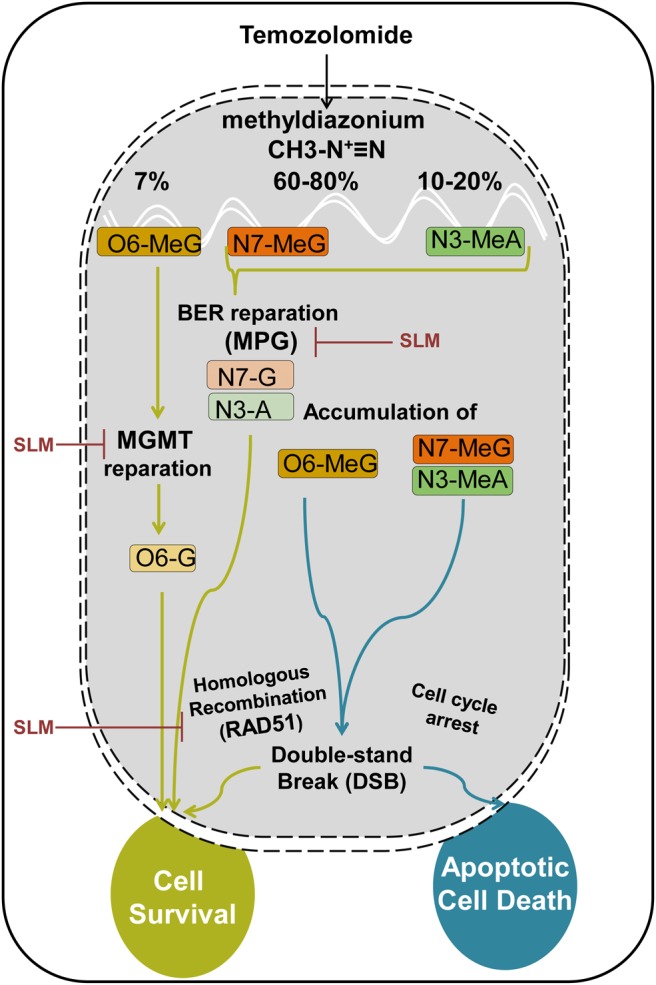Fig. 6.

Hypothetical proposed model. In physiological conditions, TMZ will be quickly converted into methyldiazonium. This compound has alkylating activity capable of methylating the O6 position of guanine and the N7 position of guanine followed by the N3 position of adenine. Repair mechanisms are different based on the position where the methyl group has been inserted. O6-meG is repaired by the MGMT enzyme. In case the DNA damage exceeds repair capacity of the MGMT, a futile cycle starts, led by the MMR system, which results in DSB in the DNA. If this damage exceeds the capacity of the HR system to repair the cell, it will enter into apoptosis and die. If the methylation is inserted in the N7-meG or N3-meA, the BER system will try to ameliorate this damage and the MPG proteins play an important role here. Again, if the BER system is surpassed, the DNA will accumulate DSBs that if not repaired by the HR system will induce cell death. ER stress-inducing drugs will induce the downregulation of MGMT, MPG (BER system), and Rad51 (HR system), sensitizing the cells to the action of TMZ.
